Dune slacks are low depressions between dune ridges and are close to, or even below, the water table. These low depressions in the hind-dunes are created by aeolian forces. In contrast to dune grassland habitats, dune slack vegetation forms on damp and almost level ground. As with the other dune habitats, pioneer/successionally-young dune slack habitat is becoming increasingly rare, succeeding to the more mature phases of slack development as the dune systems stabilise. The recognised dune habitats, and their reference and modified states, are described in the sections below.
Dune slack
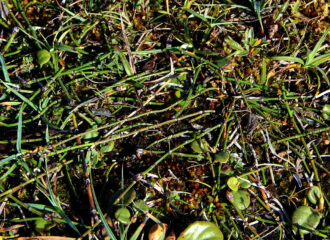
Reference state 1 – Successionally-young dune slack
The early successional phase of dune slack development has damp bare sand visible and can be very species-rich, both in bryophytes and higher plant species, with variegated horsetail (Equisetum variegatum), articulated rush (Juncus articulatus), few-flowered spike-rush (Eleocharis quinqueflora) typically present. This young habitat is also important for hosting internationally rare species such as the fen…
Read more Reference state 1 – Successionally-young dune slack
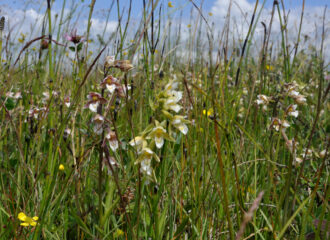
Reference state 2 – Orchid-rich dune slack
The closed orchid-rich phase of dune slack succession is probably the most colourful and aesthetically pleasing of all dune habitats. In contrast to the successionally-young seral stage, there is no obvious bare sand visible, and the vegetation is dominated by a mix of medium to tall herbs and grasses, typically with an abundance of orchids,…
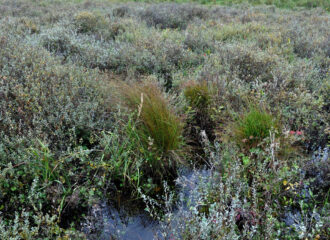
Reference state 3 – Mature dune slack
The mature phase of dune slack succession is typically species-poor and dominated by an upper canopy of creeping willow (Salix repens), often >50cm high, with a dense underlayer of moss e.g. Calliergon cuspidatum and marsh pennywort (Hydrocotyle vulgaris). Another common form of mature dune slack vegetation is where tussocks of common sedge (Carex nigra) co-dominate…
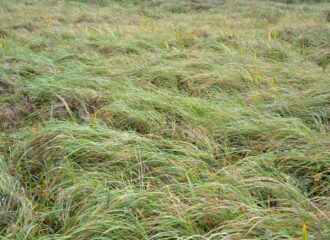
Reference state 4 – Calamagrostis dominated slack
The wood small reed (Calamagrostis epigejos) is a competitive species of grass that behaves as an invasive in wet dune slacks. Once established, it will move rapidly through a slack outcompeting all other higher plants until it is virtually a single species stand, as illustrated. This effectively replaces the ‘orchid-rich’ seral phase.
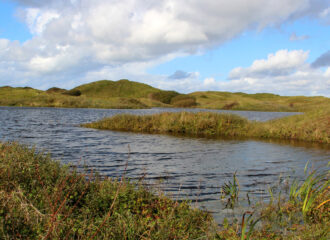
Reference state 5 – Flooded dune slack
During wetter winters, the dune slacks become inundated with water, with the wetter sites, such as Kenfig Burrows, becoming a mosaic of small lakes and pools between the dune ridges. These flooded slacks can be c. 2m deep in wet winters and will remain inundated throughout the year if the rains persist into the spring…
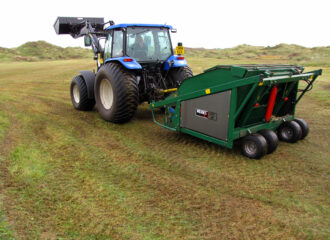
Modified state 1 – Mown dune slacks
In the absence of sufficient sand accretion, the naturally dynamic dune habitats enter a phase of stabilisation where the younger, more species-rich habitats in the succession become increasingly rare to the point of disappearing, along with the species associated with them. This happened at Kenfig Burrows in the late 1990s, and is currently in the…
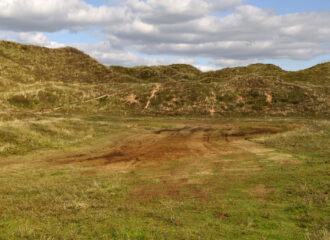
Modified state 1A – Mown dune slack
If dune slacks need mowing it should in the autumn, in the short window between the end of the growth period and the slacks starting to flood, making sure to remove the seed capsules of any rare species, e.g., fen orchid (Liparis loeselii) before mowing and replacing them after. The immediate effects of close mowing,…
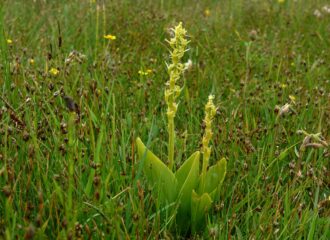
Modified state 1B – Mown dune slack vegetation
In the aftermath of mowing, the seral stage of the vegetation becomes more difficult to define, as the patches of open ground and the more open structure of the vegetation allows several species associated more with successionally-young dune slack vegetation to persist alongside species typically found in more closed swards. The internationally rare and declining…
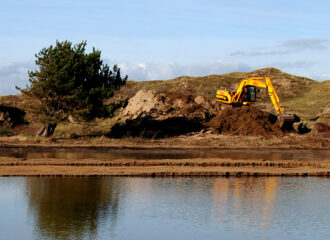
Modified state 2 – Rejuvenated dune slack
In the absence of the natural dynamism previously associated with the creation of new dune habitats there are only two practical options: to allow the systems to stabilise and mature and accept the inevitable losses of biodiversity associated with that process, or to introduce a rejuvenation program. Rejuvenation programmes can operate locally within a dune…
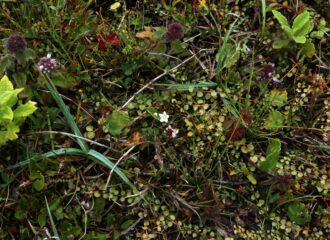
Modified state 2a – Rejuvenated dune slack vegetation
Within a year or two of the rejuvenation management, i.e. scraping the vegetation from the dune slack surface, the bare sand is recolonised by species mostly associated with the successionally-young stage of dune slack development. However, as this recolonisation involves secondary, and not primary, succession, some of the species associated with the vegetation that was…
Read more Modified state 2a – Rejuvenated dune slack vegetation

